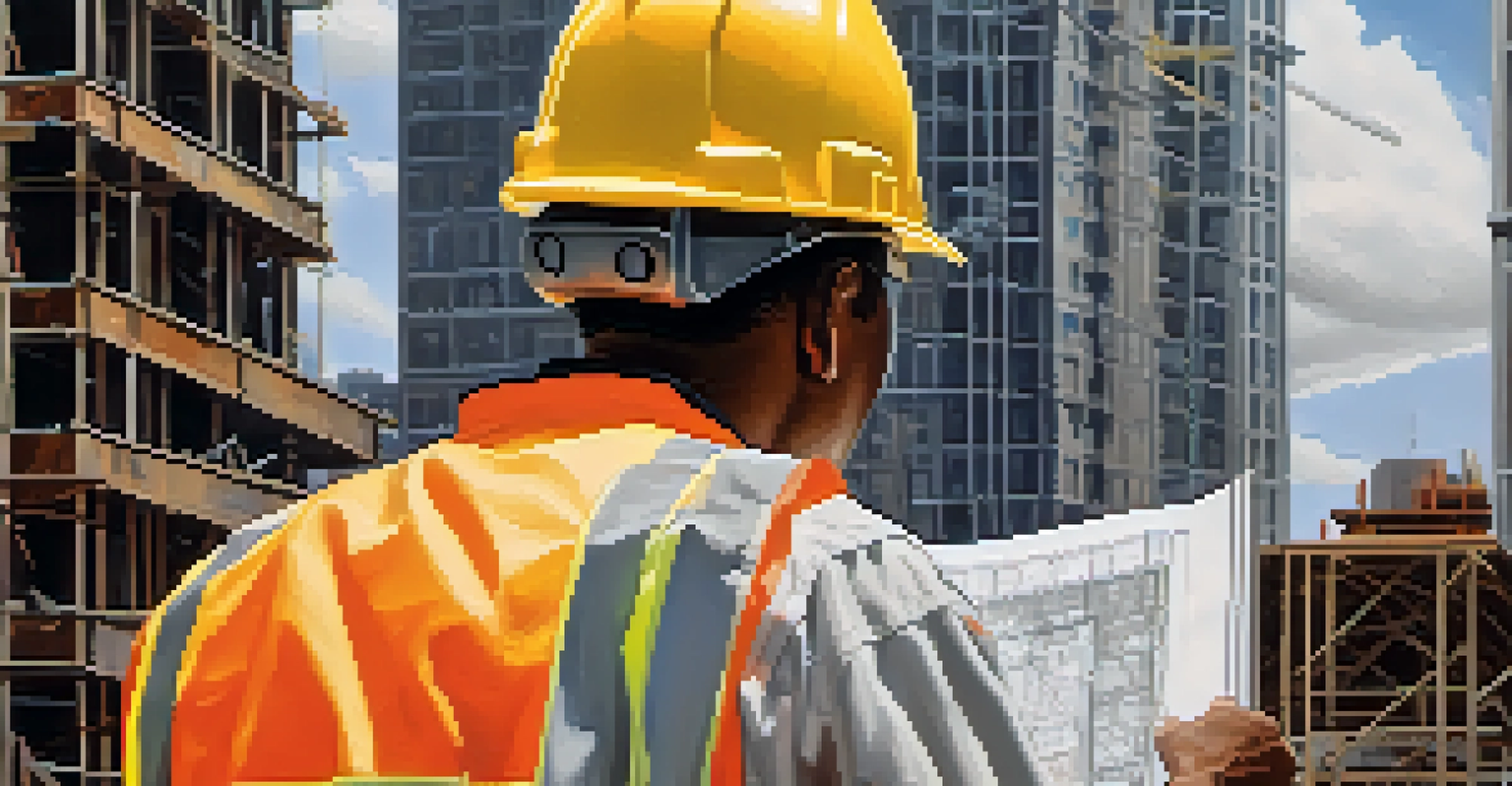Economic Challenges Facing New York State: An In-Depth Look

High Cost of Living and Housing Affordability Issues
New York State is notorious for its high cost of living, particularly in urban areas like New York City. Many residents struggle to afford basic necessities, including housing, which can consume a significant portion of their income. This affordability crisis not only affects lower-income families but also pushes out middle-class residents who can no longer sustain their living conditions.
The greatest challenge of the day is how to bring about a conversation that fosters a new economy, one that works for everyone.
The state's housing market has seen skyrocketing prices, driven by demand that far outstrips supply. For instance, as of late 2023, median rent prices in Manhattan reached record highs, forcing many to seek housing in less desirable neighborhoods or even outside the city altogether. This exodus can lead to a weakened local economy as businesses lose customers and talent relocates.
Efforts to address these issues include initiatives aimed at increasing affordable housing stock and rent control measures. However, finding a balance between protecting tenants and encouraging new development remains a complex challenge for policymakers.
Job Market Shifts and Industry Disruptions
The job market in New York State is undergoing significant transformations, driven by technological advancements and industry shifts. Sectors like retail and hospitality, once cornerstones of the state's economy, have faced severe disruptions, particularly during the pandemic. As businesses adapt, many workers find themselves needing new skills to remain competitive.

Additionally, the rise of remote work has changed the landscape for many companies, leading to a decrease in demand for office space and affecting real estate markets. This shift has prompted discussions about the future of work and how New York can retain its status as a business hub amidst these changes.
Housing Affordability Crisis Looms
New York State's high cost of living, particularly in urban areas, is pushing residents out of the market and threatening local economies.
To combat these challenges, workforce development programs are essential. By focusing on reskilling and upskilling, New York can help its residents transition into in-demand roles, fostering a more robust economy.
Public Debt and Fiscal Responsibility Concerns
New York State grapples with significant public debt, raising concerns about fiscal responsibility and long-term sustainability. As the state borrows to meet its budgetary needs, it risks straining future resources and limiting its ability to invest in necessary public services. This debt burden can lead to higher taxes in the long run, further complicating the state's economic landscape.
In the middle of difficulty lies opportunity.
Moreover, the impact of public debt extends to essential services like education and infrastructure. As funds are diverted to service existing debt, critical investments in these areas may be delayed, affecting the quality of life for residents and hindering economic growth.
To address these concerns, state leaders must prioritize responsible budgeting and consider innovative revenue streams. Tackling public debt while ensuring the provision of vital services is a delicate balancing act that requires careful planning.
Inequality and Economic Disparities Across Regions
Economic inequality is a pressing issue in New York State, with stark disparities between urban and rural areas. While cities like New York and Buffalo experience growth and development, many rural communities struggle with high unemployment rates and limited access to resources. This imbalance can lead to feelings of disenfranchisement among residents in less prosperous regions.
The COVID-19 pandemic exacerbated these inequalities, as urban areas recovered more quickly than rural ones, highlighting the need for targeted support. Addressing economic disparities requires a multifaceted approach that considers the unique challenges faced by different regions.
Job Market Faces Major Disruption
The shift towards technology and remote work is reshaping New York's job market, requiring workforce development to adapt to new demands.
By investing in infrastructure, education, and job creation initiatives in underserved areas, New York State can promote more equitable economic growth. Bridging the gap between regions will help foster a sense of unity and shared prosperity.
Transportation Infrastructure Challenges and Solutions
New York's transportation infrastructure is both a lifeline and a challenge for its economy. While the state boasts an extensive network of roads, bridges, and public transit options, aging infrastructure has led to significant issues, including congestion and safety hazards. Addressing these challenges is critical for maintaining economic viability and ensuring residents can move freely.
Investments in infrastructure have lagged behind the growing demands of a bustling state. For instance, many subway lines in New York City face delays and overcrowding, making commutes frustrating for daily travelers. The strain on transportation systems can hinder business productivity and deter potential investors.
To tackle these issues, the state must prioritize infrastructure upgrades and maintenance. By seeking federal funding and collaborating with local governments, New York can create a modern transportation network that supports economic growth and enhances the quality of life for its residents.
Education and Workforce Development Challenges
Education plays a crucial role in shaping New York's economic future, yet the state faces significant challenges in its education system. Disparities in funding and resources lead to unequal educational opportunities, particularly in underprivileged areas. This inequity can limit students' potential and ultimately affect the state's workforce.
Moreover, as industries evolve, the need for skilled workers grows. However, many educational institutions struggle to keep pace with the changing demands of the job market. This disconnect can leave graduates unprepared for available jobs, contributing to higher unemployment rates in certain demographics.
Inequality Widens Across Regions
Economic disparities between urban and rural areas in New York are growing, necessitating targeted investments to promote equitable growth.
To bridge this divide, New York must invest in educational reforms that prioritize equity and align curriculums with industry needs. By fostering partnerships between schools and businesses, the state can create pathways for students to gain the skills required for future employment.
Environmental Challenges and Economic Impact
New York State is not only facing economic challenges but also environmental ones that impact its economy. Climate change has led to increased frequency and severity of extreme weather events, which can disrupt business operations and strain local economies. From hurricanes to flooding, these events pose significant risks to infrastructure and public safety.
The state has made strides in promoting renewable energy and sustainability initiatives, yet the transition requires substantial investment and planning. Businesses need support to adapt to new regulations and practices that prioritize environmental responsibility, which can be a daunting task for many.

Incorporating environmental considerations into economic planning is essential for long-term sustainability. By prioritizing green initiatives, New York can create jobs in emerging sectors while also safeguarding its natural resources for future generations.
Future Outlook: Strategies for Economic Resilience
While New York State faces numerous economic challenges, there are also opportunities for resilience and growth. Developing a comprehensive economic strategy that addresses the diverse needs of its residents is essential for fostering a prosperous future. This includes investing in technology, infrastructure, and workforce development to create a more adaptable economy.
Collaboration among government, businesses, and community organizations will be key in implementing effective solutions. By working together, stakeholders can create innovative programs that support economic recovery and resilience, ensuring that no one is left behind.
Ultimately, a proactive approach to these economic challenges will not only benefit New York State but also set an example for others facing similar hurdles. Embracing change and fostering a spirit of collaboration will pave the way for a brighter economic future.